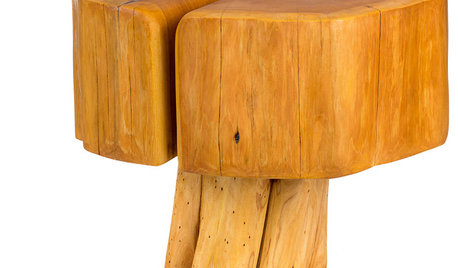Are tree wound dressing products a good idea?
toxcrusadr
10 years ago
Related Stories

FARM YOUR YARDHello, Honey: Beekeeping Anywhere for Fun, Food and Good Deeds
We need pollinators, and they increasingly need us too. Here, why and how to be a bee friend
Full Story
CHRISTMAS TREESGuest Picks: Christmas Tree Skirts for Every Style
Let's not skirt the issue: Christmas trees look more polished when the base is dressed
Full Story
PRODUCT PICKSGuest Picks: Cool Alternatives to Christmas Tree Skirts
Give your tree a fashionable new outfit for Christmas this year with one of these collars, cuffs, baskets or buckets
Full Story
ECLECTIC HOMESHouzz Tour: Good Vibes for a Hollywood Couple in Laurel Canyon
Actor Ian Harding and artist Sophia Hart’s personalities shine in a house nestled in the trees
Full Story
HOLIDAYSHouzz Call: Show Us Your Christmas Tree!
How lovely are your branches? Post a picture and share your stories
Full Story
MOST POPULAR5 Remodels That Make Good Resale Value Sense — and 5 That Don’t
Find out which projects offer the best return on your investment dollars
Full Story
GARDENING GUIDESHow to Keep Your Trees Healthy
Ensure your trees’ vigor for years to come with these tips for protecting roots, watering effectively and more
Full Story
LIFEThe Good House: An Experience to Remember
A home that enriches us is more than something we own. It invites meaningful experiences and connections
Full Story
HOUZZ TOURSMy Houzz: Goodwill and Good Taste in a Grand Colonial
Welcoming the community for charity fundraisers and more, this Massachusetts home radiates graciousness
Full Story
PRODUCT PICKSGuest Picks: Beautiful Things You Can Feel Good About Buying
Upcycled, ecofriendly or just made responsibly, these home accessories and furniture pieces will keep your conscience clear
Full Story








User
arktrees
Related Professionals
Maple Valley Landscape Architects & Landscape Designers · Norton Shores Landscape Architects & Landscape Designers · Bethlehem Landscape Contractors · Allentown Landscape Contractors · Anderson Landscape Contractors · Azalea Park Landscape Contractors · Fridley Landscape Contractors · Lancaster Landscape Contractors · Lehigh Acres Landscape Contractors · Santa Ana Landscape Contractors · Coronado Decks, Patios & Outdoor Enclosures · Welby Decks, Patios & Outdoor Enclosures · Fresno Decks, Patios & Outdoor Enclosures · Highland Decks, Patios & Outdoor Enclosures · Melvindale Stone, Pavers & ConcreteToronado3800 Zone 6 St Louis
ken_adrian Adrian MI cold Z5
brandon7 TN_zone7
RugbyHukr
Toronado3800 Zone 6 St Louis
User
wisconsitom
dricha
plumfan
hortster
mattm01
Toronado3800 Zone 6 St Louis
brandon7 TN_zone7
plumfan
Toronado3800 Zone 6 St Louis
Embothrium
Toronado3800 Zone 6 St Louis
brandon7 TN_zone7
Toronado3800 Zone 6 St Louis
brandon7 TN_zone7